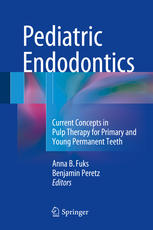

Most ebook files are in PDF format, so you can easily read them using various software such as Foxit Reader or directly on the Google Chrome browser.
Some ebook files are released by publishers in other formats such as .awz, .mobi, .epub, .fb2, etc. You may need to install specific software to read these formats on mobile/PC, such as Calibre.
Please read the tutorial at this link. https://ebooknice.com/page/post?id=faq
We offer FREE conversion to the popular formats you request; however, this may take some time. Therefore, right after payment, please email us, and we will try to provide the service as quickly as possible.
For some exceptional file formats or broken links (if any), please refrain from opening any disputes. Instead, email us first, and we will try to assist within a maximum of 6 hours.
EbookNice Team

Status:
Available4.7
14 reviewsThis book provides dental professionals with a clear understanding of current clinical and scientific knowledge on the various aspects of pulp treatment for both primary and young permanent teeth. Diagnostic parameters are clearly presented, along with step-by-step descriptions of clinical procedures, including indirect and direct pulp treatments, pulpotomy, and pulpectomy. The rationale for the materials used in each technique and their individual merits and disadvantages are examined in detail. In the case of pulpotomy, all the materials used since the introduction of this treatment modality are discussed (e.g., formocresol, glutaraldehyde, ferric sulfate, and MTA) and the roles of sodium hypochlorite, electrofulguration, and laser therapy are elucidated. Special attention is devoted to pulpectomy and root canal treatment, with consideration of debriding and obturation techniques, rinsing solutions, and root-filling pastes. A further individual chapter is dedicated to restorations of teeth treated with the different types of pulp therapy. The various conservative treatment modalities are also presented, including specific treatments for immature nonvital permanent teeth. The concluding chapter looks to the future and the potential value of stem cells in pulp therapy.